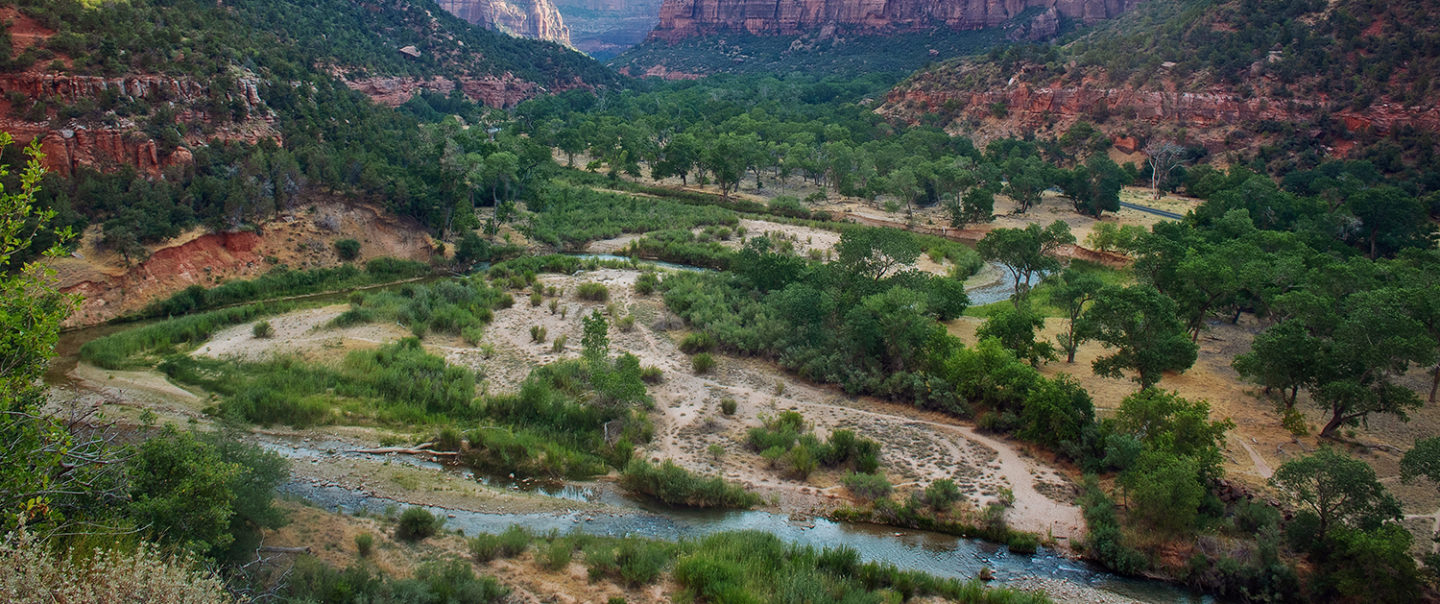Extending the Zion Experience
$750,000 Needed
“A man on foot, on horseback, or on a bicycle will see more, feel more, enjoy more in one mile than the motorized tourists can in a hundred miles.” – Edward Abbey, Desert Solitaire
Many visitors who have ridden a bike up the Zion Canyon Scenic Drive will agree with Abbey. You can appreciate the canyon’s grandeur more fully traveling through at a slower pace than if you were riding the shuttle or driving a car. Riding bikes up canyon allows visitors the peace and solitude that many seek during their visit to Zion, but on the existing road, cyclists are required to pull over to allow visitor-filled shuttles to go-around them. Currently, the only paved path for those who’d prefer to bike or walk the entire canyon is on the sometimes-non-existent shoulder of the Zion Canyon Scenic Drive, which can create some tense and precarious situations for both the trained shuttle drivers and hikers and bikers attempting to pass them on all sides.
The park would like to change that with the construction of the Floor of the Valley Trail, a route that would run alongside the path of the Virgin River up its entire 6.5-mile span from Canyon Junction to the Temple of Sinawava, the trailhead of the Riverside Walk, aka “Gateway to the Narrows.” This new route would provide an alternate path up the canyon for pedestrians and bicyclists away from the traffic and safety risks of the scenic drive.
The proposed Floor of the Valley Trail would be the continuation of the Pa’rus Trail, a three-mile paved path from the Zion Canyon Visitor Center to Canyon Junction. This 10-foot-wide, accessible concrete path improved visitor safety and provided an alternate route for cyclists and hikers looking to avoid traffic on the park’s main access road. The Floor of the Valley trail will extend the existing Pa’rus trail making it an ideal route for an unhurried, leisurely stroll to admire Zion’s monoliths and spires such as The Watchman and Towers of the Virgin, allowing visitors the very slow-pace concept Abbey advocated.
The Pa’rus Trail was built in an environmentally-friendly way that enhanced the beauty of the park and used existing unpaved access roads to minimize environmental impacts on Zion’s many sensitive natural areas. Just as was done in the creation of the Pa’rus Trail, the construction of the Floor of the Valley trail will be carried out to minimize impacts to the environment and will undergo a rigorous environmental impact assessment before construction can even begin.
Moreover, the new trail would also oversee the installation of a much-needed sewer line from Temple of Sinawava to Canyon Junction. This sewer line is essential for future plans to install modern restroom facilities throughout the canyon. Building the trail will be the first stage of the modernization of facilities in the canyon.
“This project provides a perpetual solution to waste management challenges and eliminates the need to continue to impact the Park’s natural resources at two highly visited locations.” said Bry Carter, Chief of Facilities Management, Architecture & Engineering.
The proposal will take a phased approach. This five-year project will see the first year dedicated to study and assessment. With your generosity, this legacy initiative will improve visitor safety, modernize facilities, and ultimately re-establish a direct and accessible hiking path from each end of the canyon, providing an opportunity to experience the park just as Edward Abbey prescribed.

